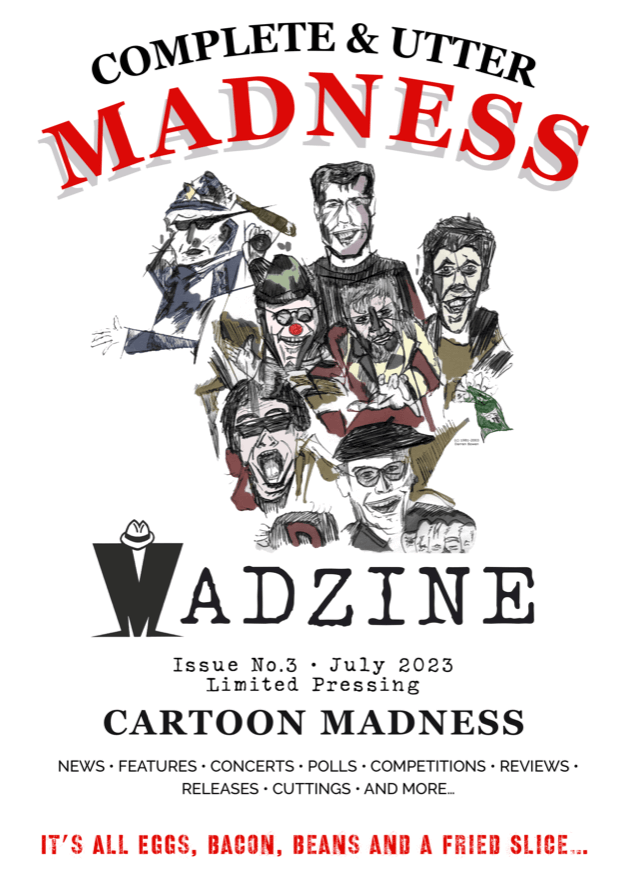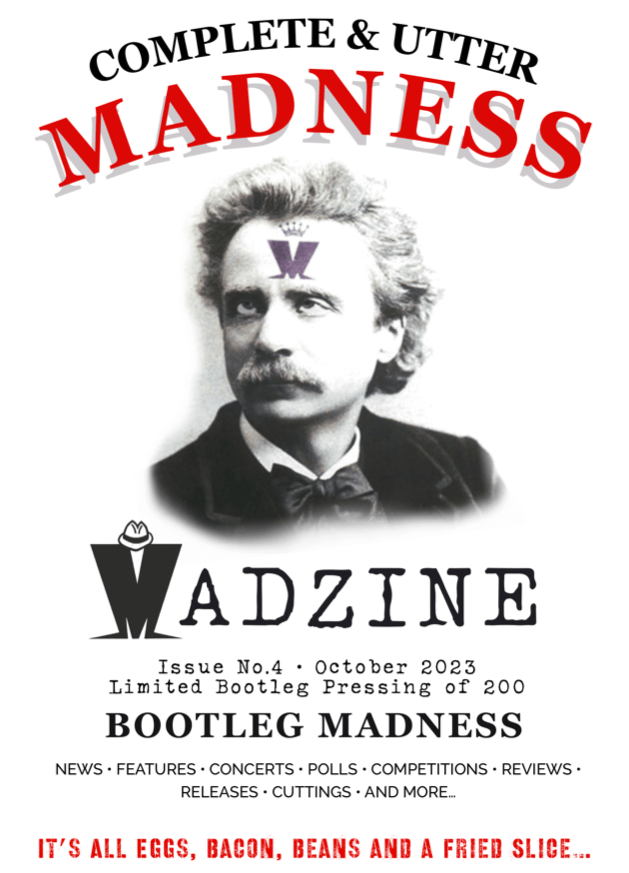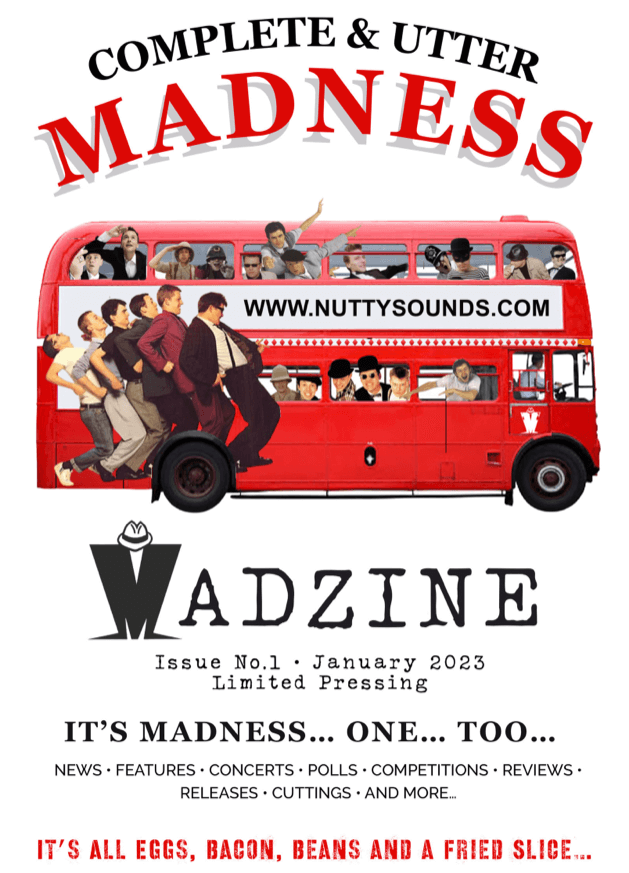Madness: Work Rest and Play
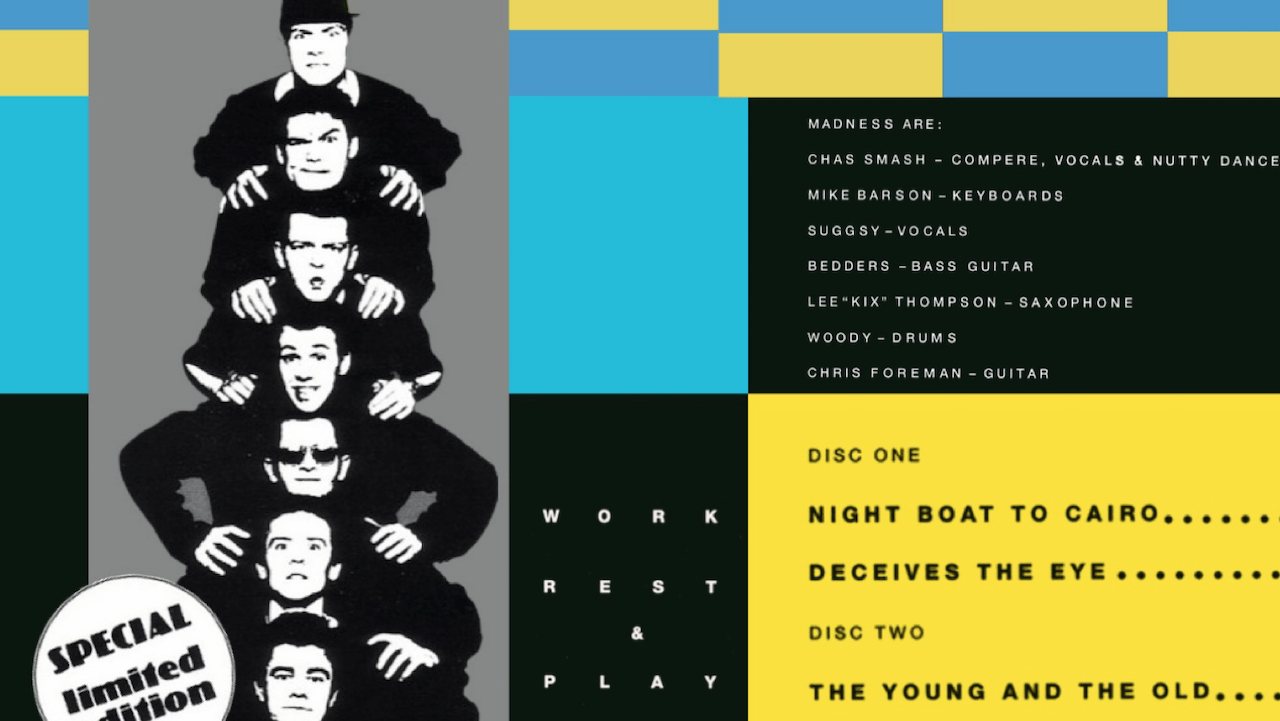
In 1980, Madness reached an essential juncture by releasing their “Work Rest and Play” EP. This EP played a vital role in their rising popularity during the late 1970s and early 1980s, solidifying their position as a powerhouse in the music industry. The EP’s success showcased the band’s ability to create unique and catchy tunes.
The EP includes four tracks:
- “Night Boat to Cairo” is one of Madness’s most iconic tracks, loved for its infectious ska rhythm, catchy melody, and humorous lyrics. The song recounts a wild night out in Cairo, Egypt, and showcases the band’s signature blend of ska, pop, and cheeky British humour.
- “Deceives the Eye” is a track that keeps the ska influence intact but also brings in new wave and pop elements. This highlights the band’s musical versatility and ability to experiment with various styles.
- “The Young and the Old” is a sombre song that differs from the other tracks on the EP. It delves into the themes of growing up and the passing of time, revealing a more introspective side of Madness’s songwriting.
- “Don’t Quote Me On That” perfectly illustrates the band’s talent for blending humour, social commentary, and entertainment into their music. The song highlights their ability to create upbeat, memorable melodies while encouraging listeners to ponder the underlying themes.
The WR&P EP was met with great success in terms of commercial sales and critical acclaim. The band’s energetic and spirited live performances helped to further expand their fan base, firmly establishing them as a significant player in the vibrant and competitive British music scene.
Before we begin, the most significant discovery in the releases is a 4-track 45rpm 7″ jukebox edition that has potentially been unnoticed for the past 41 years. Based on this discovery, eight confirmed key variations exist for the 1980 UK editions of Work, Rest and Play. These variations are in addition to the two main picture sleeve options of white versus blue.
- 33rpm with matrix numbers A1/B1 – This will play the “Rough Edit” version of Night Boat.
- 33rpm with matrix numbers A6 or A7 and B2 or B3 – This is the standard edition on black vinyl.
- 33rpm with matrix numbers A4/B4 or A5/B4 – This is the standard edition on ruby vinyl.
- 45rpm with BUY DJ 71 on the label – This is the DJ promo.
- 45rpm with BUY 71 JB on the label and the run out – This is the 4-track jukebox edition.
- 45rpm with BUY 71 JB on the label but BUY 71 DJ on the run out – This is the 2-track jukebox edition.
- 45rpm with BUY 71 JB and solid centre – This is the jukebox edition before being linked
- White label edition of the 33rpm version with matrix numbers A4/B4.
The story of how this 7″ record was produced is quite intricate and may be difficult to follow, but I will do my best to simplify it. I will provide all available information, including any previously unknown details, and make logical assumptions to make this account as clear as possible. Let’s start from the beginning.
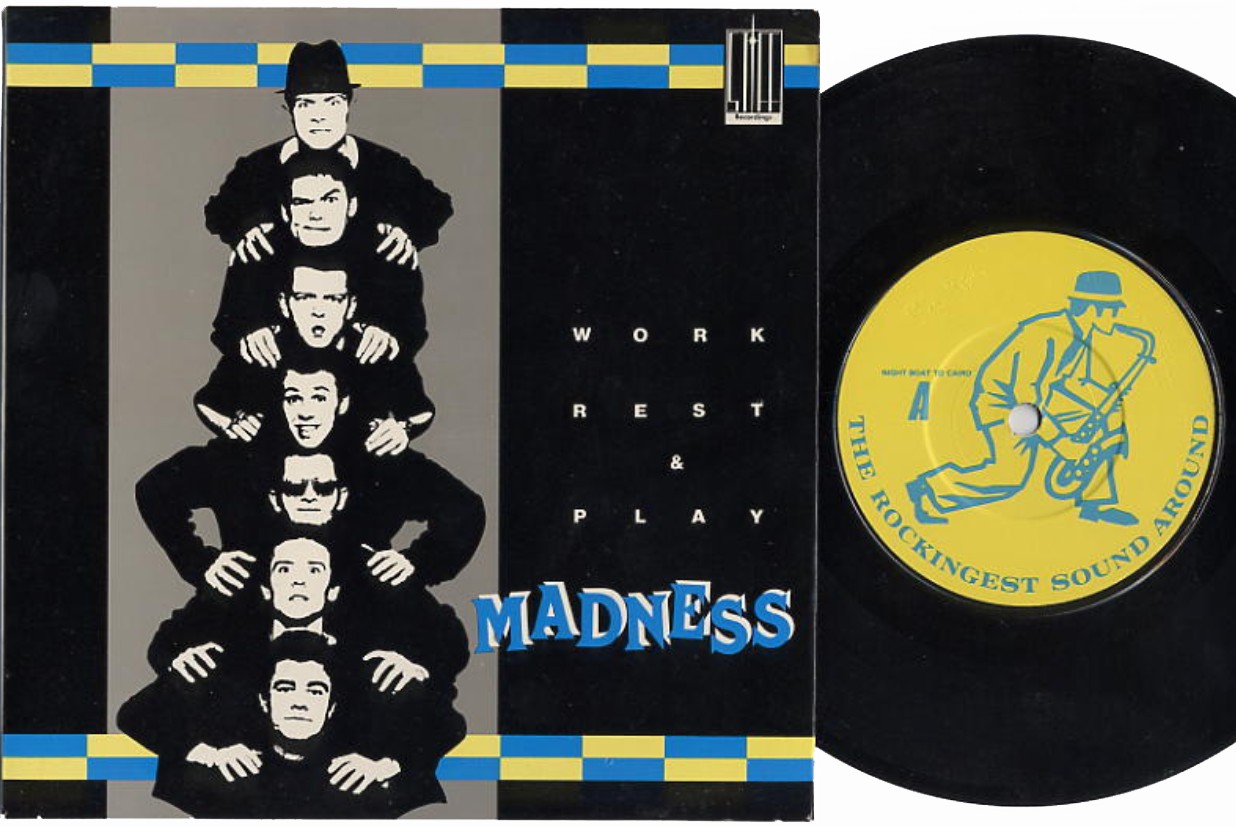
Madness released their third single for Stiff Records as an EP. Recent suggestions indicate that it was not meant to be a mini-album follow-up to “One Step Beyond” but rather just a single with a few additional tracks. The promotional press releases for the EP serve as clear evidence of this.
The EP was mastered at 33rpm. An acetate, or lacquer disc, was cut from which the first set of silver/nickel pressing plates (stampers) were made. These stampers were used to prepare the A1 and B1 tracks. Once the artwork for the labels was finalized, the 7″ was pressed.
It seems that the lacquer cutter received a master tape that was not accurate. Instead of playing the usual version of “Night Boat to Cairo”, which was made from Stamper A1 and was supposed to be a 7″, it played a “Rough Edit” edition that had been recorded and mixed with supplementary organ and was created before the strings were incorporated.
Before the stampers were made, no one had listened to the acetate. Only a few white-label test pressings were circulated, and it’s possible that they were heard by the wrong people. However, eventually, someone with the proper ears listened to the finished product – possibly a band member – and production was stopped. There are only a few surviving examples of the UK A1/B1 pressings that play the “Rough Edit” version of Night Boat, and they are scarce.
After resolving the initial issue, the mix-up with the master tape was fixed, and several stampers were created that played the correct tracks. These included stampers A4, A5, A6, and A7 for the A-side, and B2, B3, and B4 for the B-side.
It is still being determined what occurred with A2 and A3. It is possible that they were mistakenly cut with the “Rough Edit” version. Consequently, the A-side of all standard 33rpm Work, Rest and Play 7″ records was pressed using stamper A4, A5, A6, or A7, and the B-side was pressed using stamper B2, B3, or B4.
It might be advantageous to find a document that shows different figures than these. The records produced with the stamp pairings of A4/B4 and A5/B4 were created using translucent ruby vinyl.
There are slight differences in the printing of the sleeves, particularly in the colour of the print and the use of a glossy finish. Some sleeves have the typeset of “Madness in Blue” against a white background, while others have “Madness in White” against a blue background. These variations suggest that different companies may have published them.
The front of the Madness sleeve features the word “Madness” written in white through a lamination process that is not common. This process is also used for the Absolutely and Rise and Fall sleeves, which are rare. It is assumed that both sleeves were printed using the same printing processes.
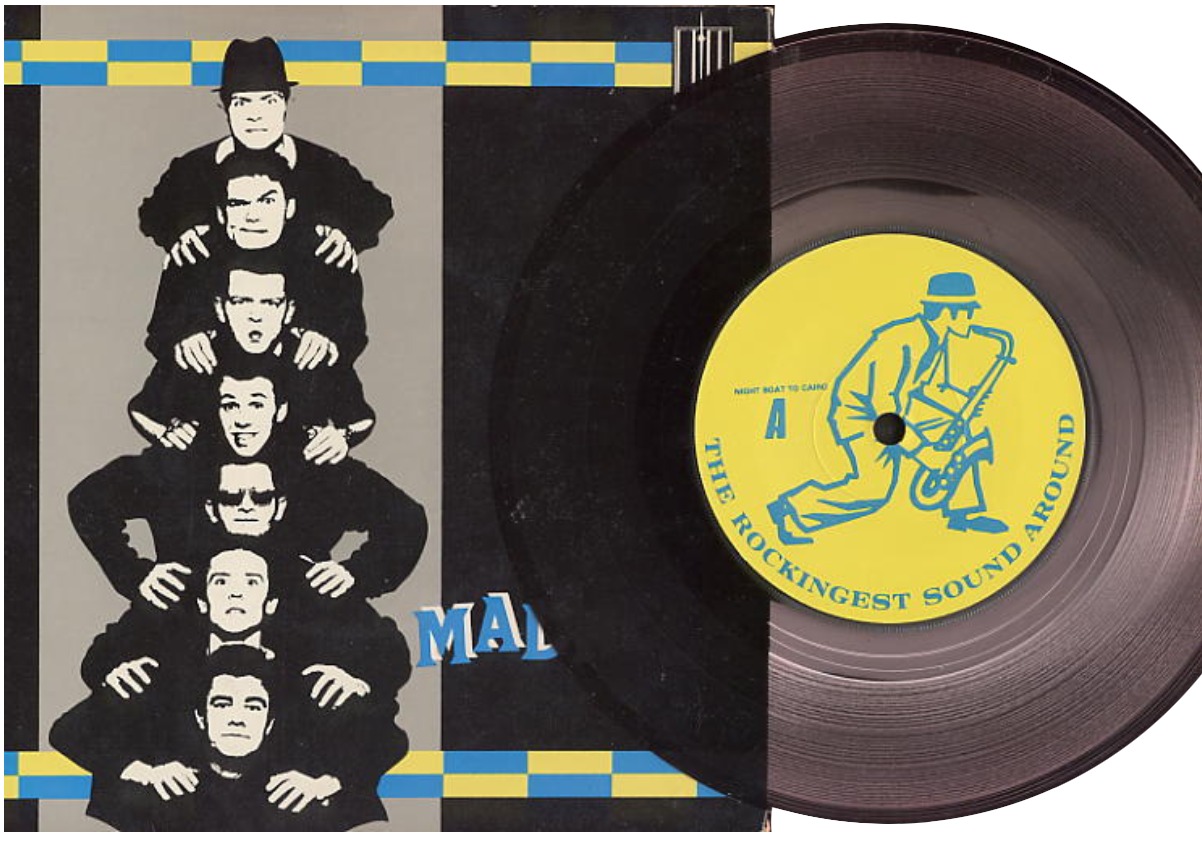
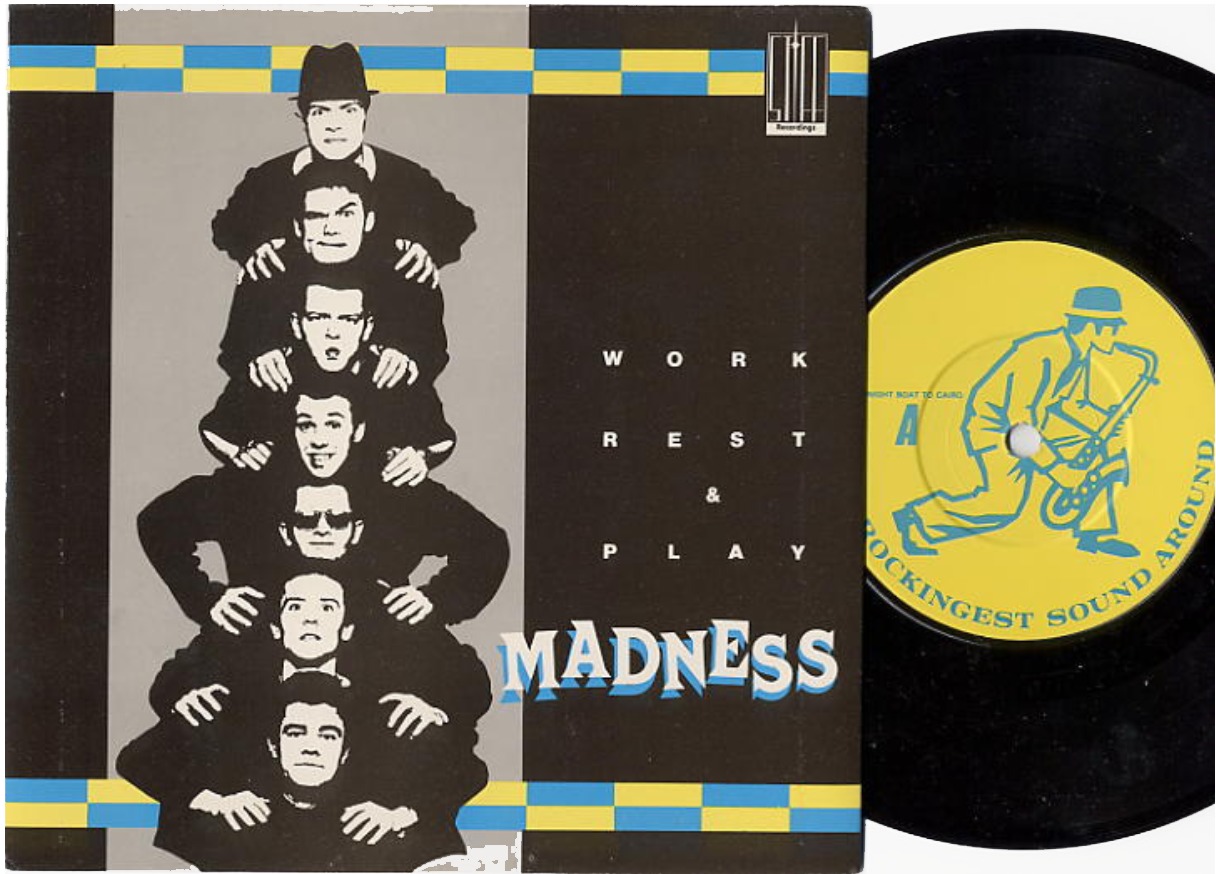
I believe it would be prudent to reconsider the usage of stampers A1 and B1, as they were responsible for the first pressing of the 7″. Our research has revealed that the “Rough Edit” version was employed, which could potentially impact the quality of the final product. It is worth noting that stampers have a lifespan of about 100,000 records before they need to be replaced, so we must exercise caution in their use to ensure optimal results.
Stiff was acknowledged for their commendable resourcefulness in utilizing all available resources, including their unsold Madness records. Impressively, they ingeniously repurposed stampers A1 and B1 to press all of the Portuguese 7″ records, despite the challenges they faced in the past.
In 1980, a version of Night Boat was played on the radio in Portugal and sold in local stores as a 7″. However, it was not the same as the One Step Beyond LP version. It is possible that it was produced in a UK pressing plant or that the stampers were sent to a pressing plant on the continent. As a result, the people of Portugal who purchased the record inadvertently bought the “Rough Edit” version and were misled.
It is not uncommon for record companies to hide their mistakes by sending defective products to other countries. In the case of the misprinted “Bed & Breakfast” sleeves for the UK One Step Beyond Stiff LP, they were sent to the Netherlands for the Dutch release to minimize waste.
To guarantee the contentment of DJs, producing a promotional version of “Work, Rest and Play” was imperative. The most recent offering from Madness would have a different audio quality if played on turntables set to 45rpm. As a result, a 2-track DJ promo was designed to be played at 45rpm. To ensure its authenticity, the matrix numbers “BUY DJ 71 A4” and “BUY-71-B1-DJ” were assigned to this promo.
To guarantee the contentment of DJs, producing a promotional version of “Work, Rest and Play” was imperative. The most recent offering from Madness would have a different audio quality if played on turntables set to 45rpm. As a result, a 2-track DJ promo was designed to be played at 45rpm. To ensure its authenticity, the matrix numbers “BUY DJ 71 A4” and “BUY-71-B1-DJ” were assigned to this promo.
When bands spot errors in releases it’s not unknown for record companies to cover their tracks, yet Stiff Records was known for minimimzing waste, by sending faulty pressings abroad.
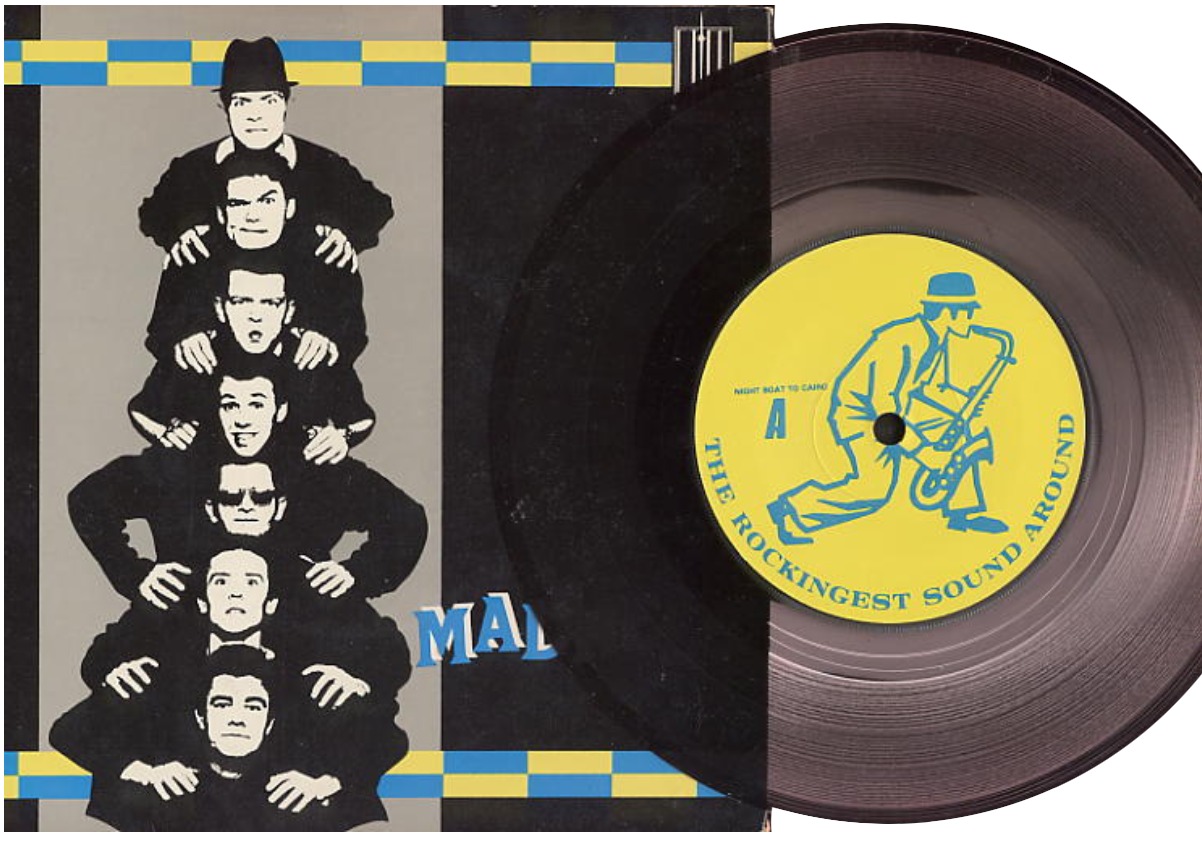
The misprinted track title “Bed & Breakfast” on the sleeves of the UK One Step Beyond Stiff LP ended up going to the Netherlands to be used for the Dutch release.
A promo version of Work, Rest and Play was needed for DJs whom would not be happy to use the latest offering from Madness on the turntable only to end up with the distorted sound of a 33rpm record playing on their 45rpm equipment. So a 2 track DJ promotion disc was produced at 45 rpm, matrix numbers “BUY DJ 71 A4” and “BUY-71-B1-DJ”.
Not only was a 45rpm edition needed for the UK’s DJ but jukeboxes were generally only programmed to play at 45rpm as well. It was no good simply dinking the standard version, as had been done for previous Madness singles, a special jukebox edition would be required.
It seems they initially decided to make a version to play all 4 tracks in jukeboxes at 45rpm. An acetate and stampers were produced for this very purpose and carried the matrix numbers “BUY 71 JB A-4” and “BUY 71 JB B-1”. However, it seems this idea didn’t go ahead, presumably because there was some concern from the jukebox vendors that customers paying for 1 track would get to hear two!
So it appears that plan was abandoned but instead of paying for a further set of acetates and stampers to be produced, they decided instead to simply recycle the stampers they had already made for the DJ promo. Very similar labels were printed, except on the label the catalogue number of BUY-JB 71 was used but the vinyl that a matrix number from the DJ promo stampers of “BUY DJ 71 A4” and “BUY-71-B1-DJ”!
To confuse matters even further, somehow the stampers which had been made and abandoned with the jukebox matrix ended up getting used to press a few of what was ultimately intended to be a 2 track jukebox edition. So a handful of jukebox pressings do exist with the 2-track jukebox labels and the jukebox 4-track jukebox etched matrix on the vinyl.
Taken from Madzine (Issue Three)
Madness: Work Rest and Play

Written by Darren Bowen
SINGLE ISSUES
NEVER MISS AN ISSUE
SUBSCRIPTION PLANS
When you subscribe to our service, you open the door to a world of knowledge and madness through our tri-quarterly Madzines. With each subscription, you can anticipate the arrival of a fresh edition every four months, packed with insightful articles, captivating stories, and engaging content.
Experience the freedom of choice with our flexible renewal options. Whether you prefer automatic renewals or prefer to take the reins manually, Madzine puts you in the driver's seat of your subscription plan. Don't settle for ordinary – elevate your subscription game with Madzine today!

